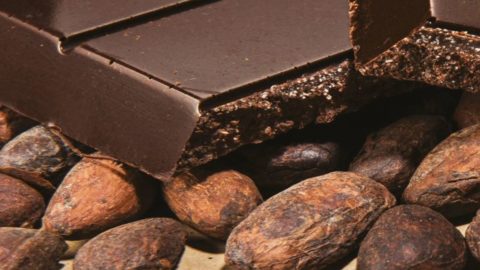Great celebrations in Modica for the Chocolate Festival and obtaining recognition from the European Union Protected Geographical Indication (PGI). A historic result for the Modica chocolate called in dialect murican ciucculatta o mudicanu ciucculatti because it also becomes the first chocolate at European level that obtains the important recognition.
For the occasion in Modica they did things in grand style. ChocoModica the event dedicated to his famous and celebrated confectionary product in the world and which had been held on another date for ten years has been moved to the Immaculate Conception to allow for a greater influx of tourists and admirers.
The whole city is therefore transformed from the 6 9 December in an open-air Chocolate square with a permanent succession of tasting stalls, cultural and artistic events, spaces for children, concerts, show-cooking, cooking competitions, readings and screenings of films and documentaries, taste workshops, which will occupy the historical center of the city: Palazzo San Domenico, Palazzo della Cultura, the former Convento del Carmine, the Workers' Mutual Aid Society, the Modica Cineteca Library, Piazza Matteotti, the Grimaldi Foundation, the Floridia Auditorium, the Garibaldi theatre, the Stables, Palazzo De Leva, the Palacultura atrium, Piazza Municipio, Casa Quasimodo, the council chamber, Piazza Corrado Rizzone, the Auditorium San Francesco La cava.
“Modica, the ancient capital of the county of the same name where chocolatiers had been operating since the 700th century, celebrates its centuries-old chocolate tradition with ChocoModica, an event that welcomes many visitors and travelers every year to re-tie the threads of its confectionary deposits thanks to the master chocolatiers who still today amalgamate palate delights and sensorial splendor – says the mayor Ignazio Abate – in the history of chocolate, flavors and cultures connect distant countries and characterize the fascinating identifying value of the Modica area”.
The history of Modica chocolate has ancient origins. First of all let's start from its particularity. Unlike traditional chocolate which is conserved hot for many hours to allow the chocolate to mix with the sugars and cocoa butter, Modica chocolate is the only chocolate in the world that is cold worked, the result of an ancient manual tradition, which leaves the sugar crystals unchanged and are not melted due to the particular cold processing. Furthermore, precisely because of its particularity, Modica chocolate still remains with high percentages of cocoa mass, a minimum of 65%, even in the "classic" versions up to the very pure versions with 90% cocoa mass.
According to some sources this type of processing (“el chocolate in la piedra“), would have been imported into the County of Modica during the domination of the Spanish in the sixteenth century but in reality the use of cold processing of chocolate would go back to the Aztecs who used it 3.000 years ago. It was so precious that it was considered a divine gift as the legend of Quetzalcoatl tells. By the Aztecs, cocoa beans were used as coins and, due to their energizing and cardio-tonic properties, they were part of soldiers' pay.
Even after centuries, due to the high cost of the raw material, Modica chocolate has been handed down as a typical sweet of noble families who, during holidays and important occasions, prepared it at home by working it for a long time on a lava stone base with a rolling pin also made of stone, adding spices such as cinnamon, vanilla, ginger, chilli pepper to taste, as well as lemon or orange peel.





